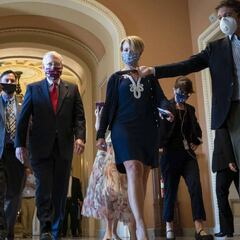Paycheck Protection Program: what is it and how can I apply?
Donald Trump signed the Paycheck Protection Program into law under the CARES Act but the scheme is due to expire on 8 August as stimulus talks continue.

The Paycheck Protection Program was signed into law by U.S. President Donald Trump under the CARES Act approved in March. The scheme consists of a $669-billion business loan program designed to provide a direct incentive for small businesses, the self-employed, certain NGOs and other business owners to maintain their workers on the payroll during the coronavirus pandemic in the USA.
In July, the Trump administration extended the PPP application process up to 8 August but it remains unclear whether it will be further extended beyond that date as Republicans and Democrats work to hammer out a deal over a new stimulus package in the Senate.
Why was the PPP introduced?
The Paycheck Protection Program has helped save nearly 5 million small businesses and 51 million jobs, making it one of the most successful disaster response efforts in history. https://t.co/YuhskYNWV6
— Jovita Carranza, SBA (@SBAJovita) July 26, 2020
The program was introduced as part of the CARES Act at the beginning of the coronavirus pandemic and was designed to provide small businesses with eight weeks of cash-flow assistance through 100 percent federally guaranteed loans. According to the SBA and the Treasury Department, 4.9 million PPP loans had been issued up to July 6.
Related stories
"The average loan size is approximately $100,000, demonstrating that the program is serving the smallest of businesses," Treasury Secretary Steven T. Mnuchin said. "Today’s release of loan data strikes the appropriate balance of providing the American people with transparency, while protecting sensitive payroll and personal income information of small businesses, sole proprietors, and independent contractors."
The PPP has been tweaked to support high street businesses as well as their larger counterparts. The Paycheck Protection Program Flexibility Act was signed off early June and extends the amount of time for repayments while broadening criteria for the use of the loan. The repayment period has been changed from two to five years and borrowers can now choose to spend as little as 60% rather than the previously stated 75% on payroll expenses. The Flexibility Act also increases the time provided to use the loan from eight weeks to 24 weeks, helping borrowers to reach full forgiveness.

